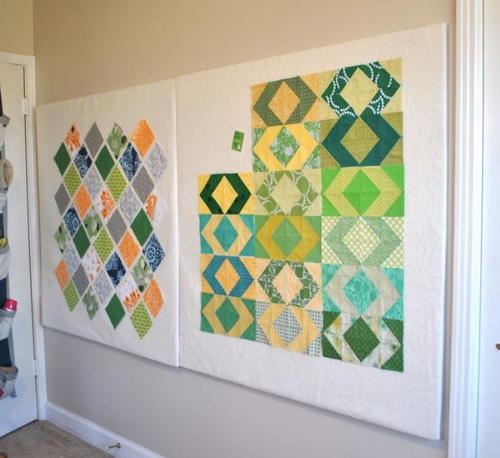Table of Content
When paired with the right security system, both Z-Wave and Zigbee devices can make your home smarter and safer. Not usually, but systems compatible with Z-Wave technology allow you to customize your home with third-party products like smart light bulbs and outlets. Ring Alarm is our pick if you want to monitor a system yourself without recurring costs. While we like Kangaroo , it doesn't offer much smart home compatibility aside from Alexa and Google voice controls.

Many or all of the companies featured here provide compensation to us. Compensation, along with hours of in-depth editorial research, determines where & how companies appear below. The This Old House Reviews team is committed to providing comprehensive and unbiased home security system reviews to our readers. This means earning your trust through transparent reviews and having the data to back up our ratings and recommendations.
Best DIY Home Security
If you choose self-monitoring, DIY systems can range between $ 10–$ 50 per month. Depending on what you want to include in your system, the upfront cost of equipment can range between $ 100–$ 1000 if you want to fully automate your home. You can purchase additional products through Abode, including cameras, sensors, smoke and water detectors, and other smart home devices. Even if they’re damaged during a break-in, the ideal system should still send an alarm signal to its monitoring centers. Choosing a do-it-yourself installation over a professional one doesn’t have to be a headache. We looked for and found a multitude of companies with pre-configured systems and intuitive installation processes, which can help reduce any installation issues.

If you don't care too much about fancy home automation schemes like flashing bulbs when someone opens a door, the SimpliSafe Essentials kit is our runner-up pick for best DIY smart security system. In addition to having one of the louder sirens we tested , it's also stylish, and an included keypad makes setting it up accessible for anyone. And, the kit comes with more accessories than the typical bundle from competitors, including three entry sensors instead of the standard one or two.
What is a DIY home security system?
For those who’d like additional home protection, Blue by ADT offers security camera bundles for $449.97. The company also offers very generous discounts throughout the year. For example, Cove’s 2020 Fall Sale included a 45% discount on home security equipment and a free camera. Most DIY wireless home security systems come with at least a 30-day money-back guarantee. If you have problems with your system within that first month, you can return it for free. Each home security company has a unique policy and warranty, so it's best to read the fine print before purchasing.

Speaking of adding devices, be sure to factor in the number of areas, such as doors and windows, you'll want to place a camera or sensor when choosing a DIY security kit. Some DIY security systems may come with a base and one or two sensors while others, like the Ring Alarm Pro, come with four sensors, a motion sensor and a range extender. We like abode’s affordability with both its refurbished security cameras and its monthly fees. Unfortunately, abode has a low customer score mostly because they have received a high number of reviews on our trusted review platform, BestCompany.com.
Q: How do DIY home security systems protect you?
Ring integrates with smart locks, its signature video doorbells, and garages to cover all areas of your property. If you have an Alexa speaker, you can use it for hands-free control, and Alexa Guard will send alerts to your phone while you’re away. Ring’s system also integrates with plenty of other third-party smart home devices , though it functions best with other Ring devices. A wireless security camera connects to your home’s Wi-Fi to offer real-time video footage at your home. Most companies require that you pay an additional cost in order to save video and view footage that isn’t live. Installation doesn’t require the Scout base hub or a monitoring plan.
SimpliSafe was one of the first DIY home security systems to hit stores and is a reasonable alternative to ADT and other professional firms. Its starter kit costs just $230 and underwent a hardware update recently that looks much better than before. Signing a contract is unfortunate, but the level of monitoring, support and warranties may be worth it. Iota was a great security system, but it wasn't able to match Simplisafe's prices.
ONIT Smart Home provides both a full line of best-in-class equipment and a team of trained professionals ready to help you each step of the way to ensure your home is protected the way you want it. Around-the-clock professional monitoring means help will be on the way if unwanted activity ever occurs. This is another monitored DIY home security system option, but unlike its competitors, SimpliSafe features smartphone and home automation access automatically. There are also no contracts, and you don’t have to opt into professional monitoring like Cove requires. Without the professional monitoring, your system will just run as a local alarm model, which is what many people are looking for.
Instead their ideal customer would be someone who wants something to work and work well for a low price. I personally recommend Ring out of all the DIY systems because they are the lowest cost and most people who are going for a DIY system really want a low cost. Unlike all of the other DIY home security systems on this page, Wyze does not have a cellular backup, so if your Internet goes down, so does the system's ability to reach you or a monitor. But if you can overlook those issues, it's one heck of a bargain.
The Interactive plan is the most complete and expensive of the two, for $24.99 monthly. It also has a secret alert feature that allows you to set up notifications for specific activity without setting off the alarm. DIY home security systems tend to be much cheaper than traditional security systems. You might save costs on initial setup, then save more money on monthly subscription fees. A traditional home security system can cost $300 to $1,000 for initial installation, for example, and then $20 to $100 per month for monitoring.

For example, the only door lock that is compatible with their system is the August door lock. Another example is that you can connect your Nest thermostat to the system, but you can’t control it from the app. These limitations will not make a good fit for anyone who wants some smart home devices mixed into their system. Installing a security system in your home or small business can be an incredibly empowering experience.
He received his undergraduate degree from Boston College, where he worked on the campus newspaper The Heights, and then attended the Columbia University school of Journalism. Scroll through your options below to learn more about the best DIY home security systems available today. We've tested out tons of different setups and rounded up the best DIY home security systems on the market right now below. David Anders is a senior writer for CNET covering broadband providers, smart home devices and security products. Prior to joining CNET, David built his industry expertise writing for the broadband marketplace Allconnect. In his 5 plus years covering broadband, David's work has been referenced by a variety of sources including ArcGIS, DIRECTV and more.

Overall, DIY home security systems are disrupting an industry that was lagging behind the times. Today, DIY home security systems offer the best combination of protection, convenience, and price for many homeowners. Of course, DIY home security systems are not the right choice for everyone. If you have a large home, for example, then you may not want to go through the trouble of installing a system on every door or window.
Since its launch, Ooma has added both battery backup ($34.99) and cellular backup, so your system will continue to function if the power and Internet go down. The Ooma Telo 4G — which provides cellular backup — costs $129, plus $11.99/month. Finally, you'll want to consider local-versus-subscription storage and monitoring options. A DIY Ring system, for example, could offer a number of monitoring and data storage options for an added monthly cost that are not available with other devices. On the other hand, if you'd rather monitor your home security system and handle data storage yourself, many devices allow you to do so at no extra cost. SimpliSafe’s kits have unique names, including The Foundation, The Essentials, The Keep, The Knox, and The Haven, depending on how many items are in your kit.


No comments:
Post a Comment